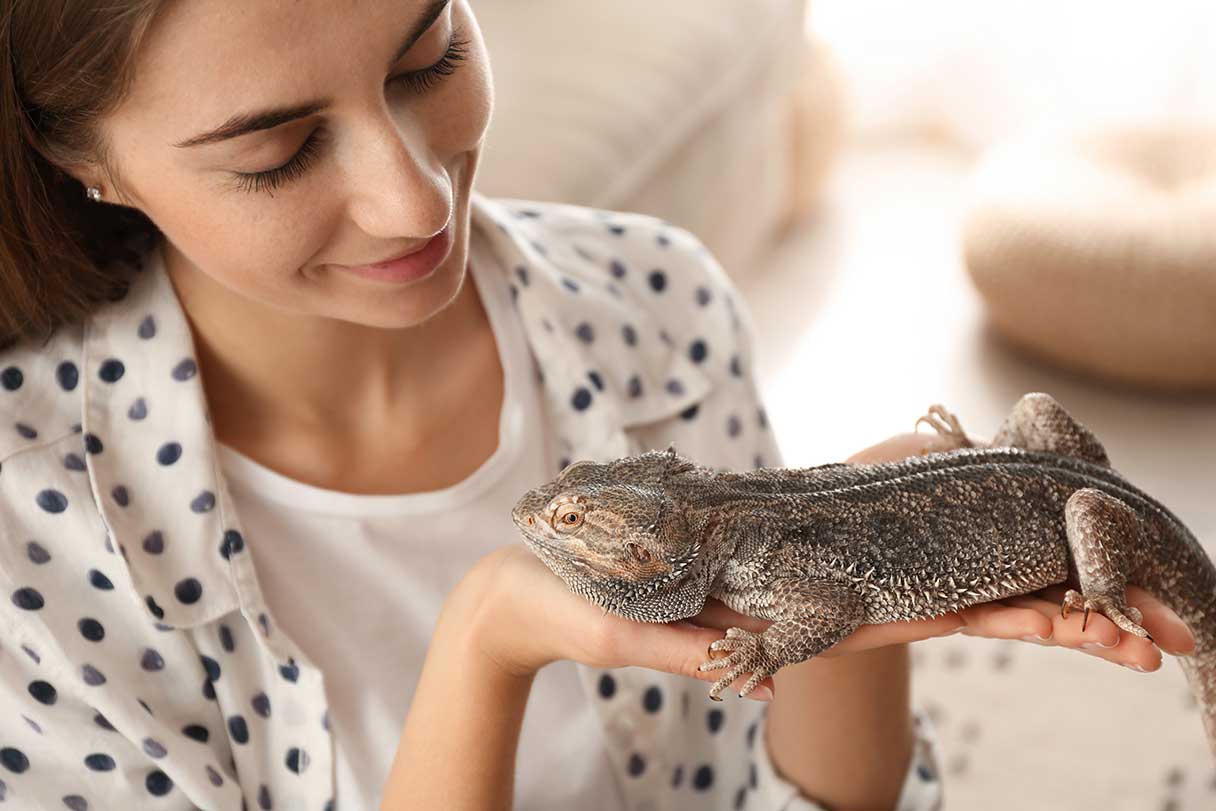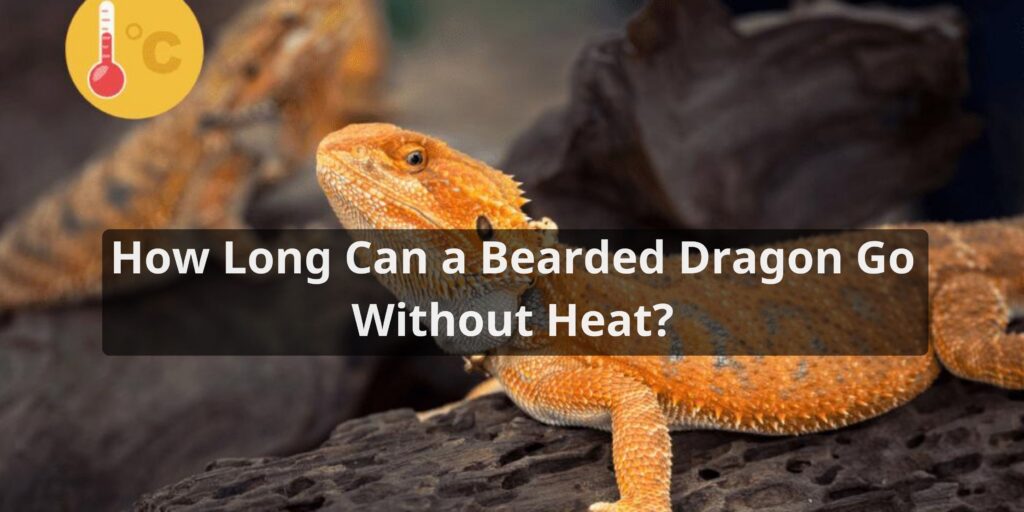Bearded dragons are reptiles that originate from the deserts of Australia. As cold-blooded animals, bearded dragons rely on external heat sources to regulate their body temperature and thrive. Without proper heating, bearded dragons can quickly become ill and even die. So how long can a bearded dragon go without heat?
The Importance of Heat for Bearded Dragons

Bearded dragons need adequate heat for the following reasons:
- Metabolism – Heat enables bearded dragons to digest food, produce energy, grow, and carry out other metabolic functions. Without heat, their metabolism slows down dramatically.
- Immune system – Warm temperatures keep a bearded dragon’s immune system strong and functioning properly. Lack of heat stresses the immune system.
- Activity levels – Heat gives bearded dragons the energy to be active. Without it, they become lethargic and inactive.
- Feeding – Bearded dragons won’t eat if they’re too cold. They need belly heat to digest their food.
- Healthy appetite – Warmth stimulates a bearded dragon’s appetite. Cold dragons lose interest in eating.
- Growth – Baby and juvenile bearded dragons require warm temperatures to grow properly. Lack of heat can lead to stunted growth.
- Comfort – Like all reptiles, bearded dragons thrive when kept at an optimal temperature range that makes them feel comfortable.
Time Limits Without Heat
So exactly how long can a bearded dragon survive without heat? Here are some general guidelines:
- Under 12 hours – A brief period under 12 hours without supplemental heat is unlikely to harm an otherwise healthy bearded dragon. But their health can deteriorate rapidly beyond this time frame.
- 12-24 hours – Lack of heat for 12-24 hours places significant physiological stress on a bearded dragon. Their appetite will decrease, activity levels drop, and digestion slows. Some effects may linger even after heat is restored.
- 1-2 days – After 1-2 full days without heat, a bearded dragon will be in poor shape. Their immune system crashes, metabolism grinds to a halt, and they become highly vulnerable to illnesses. At this point, serious health complications or death become likely.
- 3-5 days – Going 3 days or more without any heat source almost always results in the death of a bearded dragon. Their health spirals out of control rapidly. By day 5, most beardies without heat will have died from complications such as intestinal paralysis, infection, or organ failure.
Providing a Heat Source
Given how quickly bearded dragons decline without adequate heat, it’s imperative to provide a proper heat source and maintain appropriate temperatures in their habitat at all times. The optimal temperature range for bearded dragons is about 75-100 F degrees on the cool end and 90-105 F degrees on the warm end.
Key heating elements include:
- Basking bulb – A bright white incandescent or halogen bulb over the basking area creates a hot spot for basking. This should be the warmest area in the tank.
- Ceramic heat emitter – These bulbs produce heat but no light, which is ideal for nighttime heating.
- Reptile heating pad – An under tank heating pad provides belly heat to aid digestion.
- Temperature regulating device – A thermostat or dimmer switch prevents overheating and keeps the habitat at safe temperatures.
Bearded dragons thrive when kept within their proper temperature range. Allowing the tank to get too hot or cold, even for a few hours, jeopardizes their health. Setting up adequate heating ensures bearded dragons can maintain their body temperature and remain healthy.
Conclusion
In summary, bearded dragons rely heavily on environmental heat to stay healthy. While they may survive a single cool night, prolonged lack of heat is extremely dangerous. Most bearded dragons will die within 3-5 days without access to proper heat sources and appropriate temperatures. Prevent health issues by always providing sufficient heat and closely monitoring the temperature in a bearded dragon’s habitat. With adequate heating, these popular pet reptiles will remain active and thrive.
FAQs About How Long Can a Bearded Dragon Go Without Heat
How long can a bearded dragon go without heat before it becomes a concern?
Bearded dragons are ectothermic, so their ability to withstand cooler temperatures varies. Generally, they can tolerate a few hours without heat, but extended periods below their ideal temperature range (95-105°F or 35-40°C) can lead to stress, slowed metabolism, and health issues.
Are there variations in how different age groups of bearded dragons handle a lack of heat?
Yes, age influences heat tolerance. Juvenile dragons are less resilient and require more consistent heat. Adults can handle short breaks but are still sensitive to prolonged cold spells.
What are the risks or health issues associated with extended periods of low temperature for bearded dragons?
Extended exposure to low temperatures can cause digestive problems, reduced immune function, and respiratory infections. Severe cold stress may lead to brumation, a hibernation-like state, which can be dangerous if not managed correctly.
Can bearded dragons tolerate brief periods without heat, such as during transportation or power outages?
Brief periods without heat during transportation are generally tolerated, but ensure proper temperature recovery upon arrival. For power outages, use alternative heat sources like heat packs or blankets to maintain warmth.
What steps can I take to ensure my bearded dragon’s safety if I anticipate a temporary lack of heat?
Prepare for emergencies with backup heat sources such as heat pads, blankets, or hot water bottles. Keep a well-insulated travel carrier for transportation to minimize heat loss.
How does the ambient temperature affect a bearded dragon’s heat requirements and tolerance?
The ambient temperature plays a critical role. Cooler surroundings increase a bearded dragon’s reliance on external heat sources. Inadequate ambient temperature can lead to stress and health issues.
Are there signs or behaviors that indicate a bearded dragon is becoming too cold or stressed due to insufficient heat?
Signs include reduced activity, seeking warm spots, darkening of skin, or lethargy. Rapid breathing or spending excessive time basking can also indicate temperature stress.
What are the consequences of prolonged exposure to low temperatures on a bearded dragon’s overall health?
Prolonged exposure can weaken their immune system, reduce appetite, and lead to respiratory infections, impacting long-term health. It may also trigger brumation, which requires careful management.
Can bearded dragons enter a state of brumation or dormancy to cope with colder temperatures, and is this healthy for them?
Bearded dragons can enter brumation, but it should be monitored and managed. Prolonged or unmanaged brumation can lead to dehydration and weight loss. Consult a veterinarian if brumation is a concern.
How should I prepare for situations where I may need to provide alternative heat sources for my bearded dragon?
Have backup heating methods ready, including heat pads, heat lamps, or even a generator for power outages. Familiarize yourself with emergency heat sources and use them promptly when needed.



